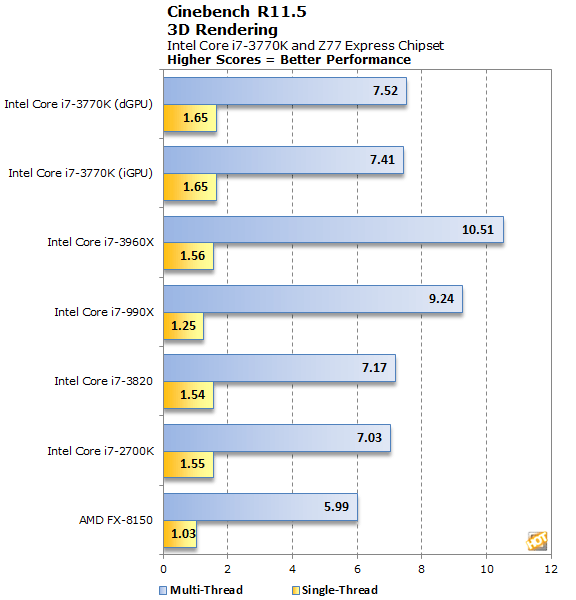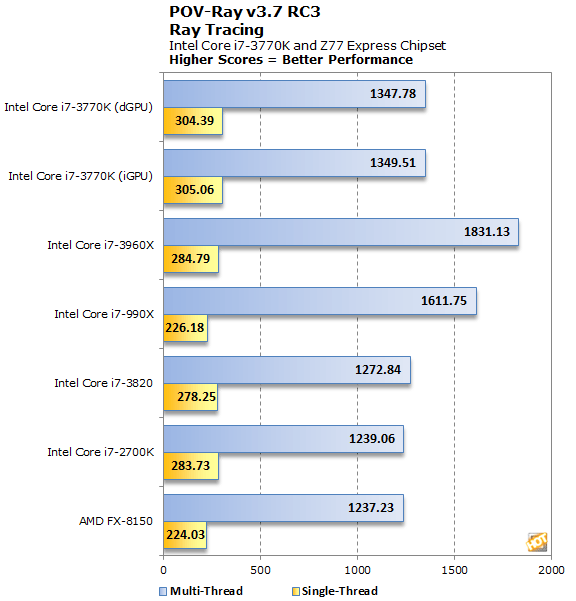Cinebench R11.5 and POV-Ray
Cinebench R11.5 is a 3D rendering performance test based on Cinema 4D from Maxon. Cinema 4D is a 3D rendering and animation suite used by animation houses and producers like Sony Animation and many others. It's very demanding of processor resources and is an excellent gauge of pure computational throughput.
|
This is a multi-threaded, multi-processor aware benchmark that renders a photorealistic 3D scene (from the viral "No Keyframes" animation by AixSponza). This scene makes use of various algorithms to stress all available processor cores. The rate at which each test system was able to render the entire scene is represented in the graph below.

The new Core i7-3770K put up the best scores of any quad-core processor in the multi-threaded benchmark, but couldn't quite keep pace with the hex-core Intel CPUs. In the single-threaded test, however, the Core i7-3770K was the fastest of the bunch, due to its architectural enhancement and higher Turbo frequencies.
|
POV-Ray, or the Persistence of Vision Ray-Tracer, is an open source tool for creating realistically lit 3D graphics artwork. We tested with POV-Ray's standard 'one-CPU' and 'all-CPU' benchmarking tools on all of our test machines, and recorded the scores reported for each. Results are measured in pixels-per-second throughput; higher scores equate to better performance.

POV-Ray tells essentially the same story as Cinebench. The Core i7-3770K's performance in the multi-threaded test were better than any other quad-core, but it finished behind the hex-core processors. It's single-threaded performance, however, was once again the best of the group.






